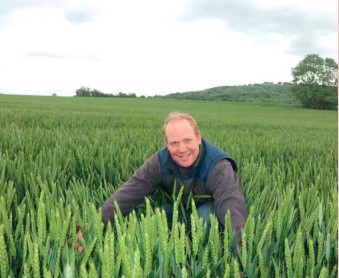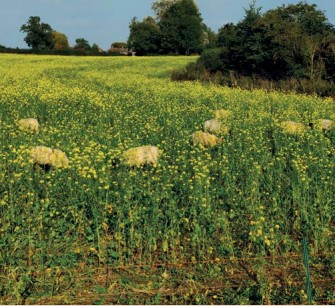How I decided to join a carbon payment scheme

Not a week goes by without another discussion about getting paid for carbon. I know that many farmers are taking a “wait and see” approach and I respect that. Above all, I understand that making a decision to enter this new market feels big and it feels complex. Without good advice on it, or how, to proceed, the natural choice is to do nothing.

I was in no better position than anyone else six months ago, and I could see that many professional advisors were equally out of their depth, being honest. Nevertheless, I try to do all I can to learn about new opportunities directly myself and so I embarked on a process of systematically engaging the main providers. In the end, I have signed up with Soil Capital and I have tried to document my key learnings to get to that point in a series of videos on my YouTube channel so that others can benefit from what I discovered. Here are some of the most important takeaways that helped me make a decision!
Carbon payments are based on annual improvements
Lots of influential bodies and voices seem to be warning farmers against “selling all your carbon now”. This seems to be based on an important misunderstanding about how carbon payment schemes work – at least in annual arable systems. When you engage in such a scheme, nobody is coming along, measuring the total carbon stock in your soil that you’ve built up over the past and offering you a contract based on you keeping that stock of carbon where it is today for the next 20, 50 or 100 years. That may be how it works in forestry, but not in soil carbon.
Instead, these schemes are offering to generate payments for the new carbon you add to your soil on a year-by-year basis. Contract terms vary, but fundamentally, transactions are organised around this annual flow of new carbon into the soil, not by forward-selling rights to the entire stock of carbon you’ve historically stored in your soil. As it happens, Soil Capital is able to reward both new farming practices and the maintenance of existing ones that achieve these additional flows of carbon into the soil, but the core point is the same – it is annual improvements generating the payments. The decision is not as big as “all your carbon”.
There are options beyond carbon credits for offsetting
Discussions on this topic always seem to refer only to “carbon offsetting”. This makes us all think of oil and gas companies, or other heavy emitters, happily polluting the atmosphere and using their profits to clean their conscience and their carbon balance sheet. They formally “offset” their emissions with carbon credits purchased from farmers but they have no relationship with the farmer. This is understandably not such an attractive proposition for many farmers. But it is wrong to think that this is the only way for companies to reward farmers for improving their climate impacts.

The companies that buy farmers’ crops now have to consider the carbon emissions from their supply chains – including those at farm-level – as part of their own carbon balance sheet. Schemes that enable such companies to incentivise farmers in their own supply chain to improve their carbon performance exist, and Soil Capital is one. In this case, the offsetting dynamic that puts so many off is not there. This is simply companies within our supply chain working to reduce their own footprint.
Getting to net zero first isn’t a hard requirement
Surely, if we as farmers are more often than not “part of the climate change problem” we should have to get to net zero ourselves before we can get paid for carbon? I hear this a lot and it is a perfectly reasonable point of view. But we all need to understand that this is a moral position, not a requirement of the market we could be selling in to. For decades, carbon markets have existed to enable the world to find the most economically efficient way to reduce greenhouse gas emissions. Reducing emissions has always been in their scope and that has often meant paying people to make changes that reduce their emissions, but see them continuing to generate emissions overall. The discussion about going further and taking carbon out of the atmosphere – including via so-called “nature based solutions” – is much more recent.
Carbon payment schemes for farmers tend to reflect this market reality – rewarding farmers both for reducing emissions and for increasing our storage of carbon in our soils. The market is comfortable with us getting paid to progress to (and then past) net zero, even if some of us are not there yet.
You don’t have to tie your hands
No farmer, especially at such a time of change, wants to enter an agreement that binds them in for the long-term and limits their flexibility to adapt their farming system. This is an area where due diligence matters and two topics stand out: prescribed practices and exiting an agreement. On prescribed practices, I learned that different schemes take different approaches. Some will set as a rule that you cannot cultivate deeper than 10cm. Others will require you to select practices that you will implement from a set menu. I prefer the flexibility to do what I judge is most appropriate for my farm, with visibility of any consequences in advance. This is what I get with Soil Capital. On exiting an agreement, the key thing is to understand the terms for exiting, because these do vary. Some schemes may ask you to pay back portions of the carbon revenue you have previously earned. I looked for straightforward terms that allowed you to exit easily and with no such clawbacks.
Prices may rise, but moving early isn’t necessarily a disadvantage
All the signs are indeed that the value of carbon should indeed rise, it’s just a question of by how much and when. What I learned was that, for a farmer already practising carbon friendly systems, delay can be costly because the carbon markets cannot continue to reward carbon improvements in farming indefinitely. Typically, after 20 years or so of consistent good practices, the understanding is that soil carbon levels reach a new equilibrium and so those new flows of carbon into the soil that the market is looking to reward tail off. With that in mind, the question becomes how a scheme commits to sharing the benefits of rising carbon prices with farmers that get involved now. Is the price fixed for a number of years, meaning past a certain point, the scheme operator benefits at the expense of the farmer? Are details even specified?
Soil Capital was running its scheme in continental Europe before bringing it to the UK. This experience informs their commitment to farmers that the farmer will always earn 70% of the final sales price of their carbon, however high the price rises. I like how this aligns the interests of the farmer with the platform operator.
I hope my experience helps you understand this opportunity. As I say, there is plenty more on my channel. Whether from the supply chain, the government or just wider society, it is clear that becoming part of the “climate solution” is a challenge we all must face. For me, the right carbon payment scheme can offer transitional payments to help us put carbon friendly practices in place. Along the way, getting proper carbon footprint assessments done and practice improvements certified can only put us in a stronger position for the changing world of CSS, ELMS, SFI and carbon trading.